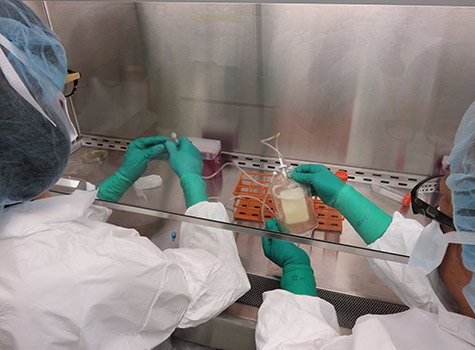One exciting new technology on the horizon is to create a
Scientists funded by the Defense Threat Reduction Agency’s Chemical and Biological Technologies Department are continuing to expand the functionality of DNA by combining organic nucleic acids, the building blocks of DNA, RNA, mRNA and tRNA, with synthetically engineered ones.
Managed by DTRA’s Dr. Ilya Elashvili and led by Dr. Steven Benner from the Foundation for Applied Molecular Evolution and Firebird Biomolecular Sciences, and Dr. Joseph Piccirilli from the University of Chicago, scientists are exploring how to build a fully artificial molecular biology system by expanding our knowledge of nucleic acids.
Following a «synthetic biology» paradigm, the project aimed to enlarge the building block makeup of DNA and RNA by introducing synthetic nucleotides to expand their genetic information packing capacity and functionality. As such, the research has made large discoveries in support of new strategies for threat protection.
One discovery highlights the first crystal structures of DNA and RNA built from synthetic nucleotides. The synthetic nucleotides, named P and Z, fit seamlessly into the organic DNA’s structure. Building on the first breakthrough, another discovery demonstrates that this artificial genetic system could evolve to give new functional molecules. Both achievements were reported in the Journal of the American Chemical Society articles «Structural Basis for a Six Nucleotide Genetic Alphabet» and «Evolution of Functional
Although building synthetic nucleic acids is advanced for DNA, the research is still emerging for RNA. The team recently reported the first crystal structure of a functional RNA molecule that contained artificial nucleotides in the Angewandte Chemie article «A Crystal Structure of a Functional RNA Molecule Containing an Artificial Nucleobase Pair." Researchers stressed that the molecule retained its riboswitch functionality and maintained ligand specificity with high sensitivity.
The researcher team then applied these new capabilities to detect viruses in environmental samples, including West Nile virus in mosquitoes and the virus that causes Middle East Respiratory Syndrome, which is currently active in South Korea. These latter findings are published in a recent Analytical Biochemistry article titled «Detecting respiratory viral RNA using expanded genetic alphabets and
The scientists engineered six different nucleotide building blocks, two more than seen in natural DNA, which expanded the nucleotide’s information packing capacity and functionality. If the understanding of natural DNA is correct, the team should be able to construct artificial chemical systems that replicate, evolve and adapt.
The structural biology and biophysics reported by the team demonstrates that the artificial DNA displays all of the conformational dynamics that natural DNA needs to do its job. These include an ability to change shape, respond to different functional environments, and adapt to meet different functional challenges.
The team also showed that their artificial DNA evolved in response to selective pressures, creating molecules that bind selectively to cancer cells, distinguish cancer cells from normal cells, and bind to antigens from Bacillus anthracis, the bacterium that causes anthrax. The team is now using laboratory in vitro evolution (live) to create catalysts, as well as receptors and ligands.
This project is in a basic research program; however, the heightened understanding of DNA and RNA gives scientists increased command over their behavior. From this control comes an extraordinary manifold of new technological capabilities for both the warfighter and general population.
Recently, a single assay detected 22 viruses that were carried in a single mosquito carcass. These viruses include West Nile, dengue, and yellow fever, but also the less
The research was published in the Journal of Virological Methods article «
By combining the functional diversity of proteins with the replicability of DNA, this artificial molecular system is now yielding receptors, ligands, and catalysts «on demand." These will appear in devices used throughout homeland defense, giving our nation an agile platform to manage threats, both natural and
